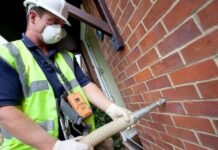Last Updated on June 2, 2023 by
Managing acute respiratory failure had been a nightmare for many Australian patients a couple decades until more convenient and affordable solutions were introduced in the medical industry. And if you are an aspiring UCAT course student, you must know these things beforehand. Needless to say, suffering from acute respiratory failure or other related respiratory complications for that matter is an overwhelming experience, which is why it is important to manage and treat it before it gets even worse. Fortunately, various medical solutions were introduced to patients in an aim to alleviate their pain and suffering. In the past several years one particular ventilatory support solution has gained so much popularity in developed countries including Australia, and this is no other than non invasive ventilation or simply NIV.
The success of using NIV for managing both acute and chronic respiratory problems started in the 1980s and many medical institutions started to pick it up from then on. Today, this ventilatory support technique has become one of the most trusted methods Australian patients choose. NIV involves the administration of ventilatory support that differs from its invasive counterparts like endotracheal tube and tracheostomy tube. NIV does not use invasive artificial airway, which makes it unique and different from other ventilatory support methods. Because of the cutting-edge features of NIV, many hospitals, aged care facilities, medical centres, and clinics turned to NIV instead of traditional invasive ventilation.
While NIV has become an integral part of patient care management for hospital patients, its flexibility and ease of use have made it useful for home setting. Many home patients suffering from acute and chronic respiratory problems are entrusting their needs to NIV. With physician’s recommendations and advice, home patients can purchase their own NIV device for home use.
According to UCAT course professors and medical practitioners, non invasive ventilation is quickly becoming more popular in Australia because of its ease of use and effectiveness, but many patients are still yet to discover how it works. If you are not yet aware how NIV works and how it will affect your respiratory problems, then the things listed below may help you. Below are the things you may expect when using NIV device for the first time.
- When using NIV device for the first time, you may feel uncomfortable and awkward – this is completely natural as you are not used to wearing it. You may notice unusual pressure while breathing, which is likewise natural. It is advisable for first-time users to focus on pushing out the air while breathing out instead of focusing on the unusual pressure.
- It is discouraged to open your mouth while using NIV because air will leak from your mouth, which will make you feel uncomfortable. When you wake up with your mouth open, you may feel air rushing from your mouth, which is normal for patients using NIV. Instead of closing your mouth, it is advisable to go back to sleep.
- You may feel dryness in your mouth and nose while using NIV, and this experience is more common during winter or cold weather. If this feeling persists, it is advisable to consult with your therapist or physician. Your physician or therapist may advise you to add humidifier in your system to counter the dryness in your mouth and nose.
The rule of thumb in using non invasive ventilation in home setting is to regularly consult your therapist. If you are feeling uneasy, unpleasant, and uncomfortable using the device, your second nature should be is to contact your therapist. If you wish to know more about NIV, don’t hesitate to contact a respiratory therapist or a respiratory physician for more information.
Read More: The Perfect Utility of the Variable Tube Expanders
Apart from that, if you are interested to know about Ventilation Options for Non-metallic Electrical Enclosures then visit our Home Improvement category.



























